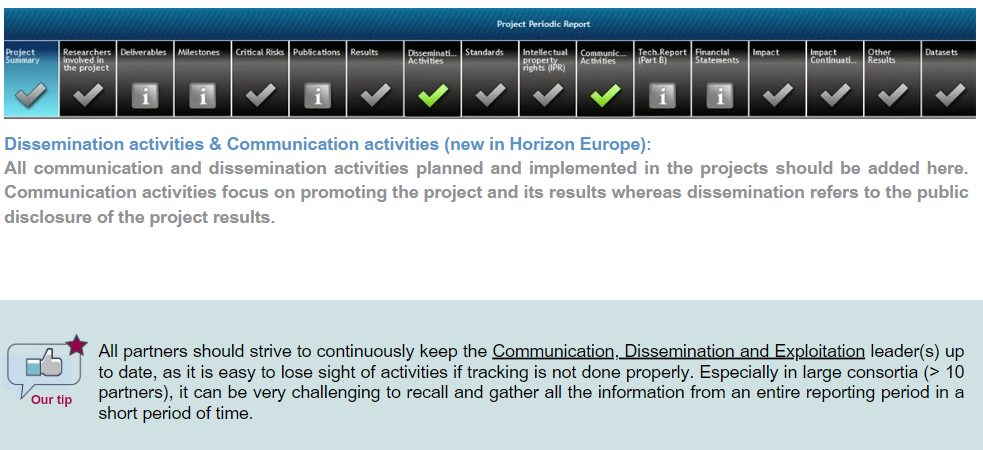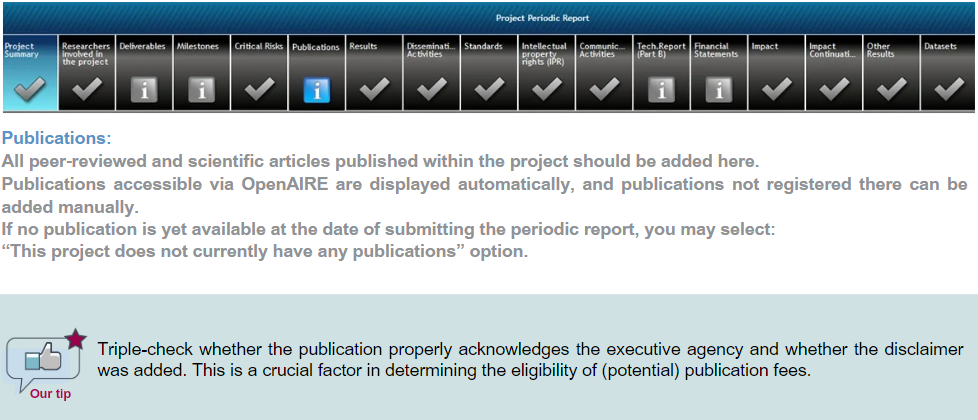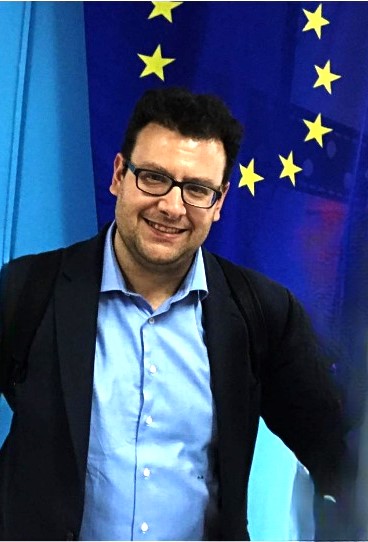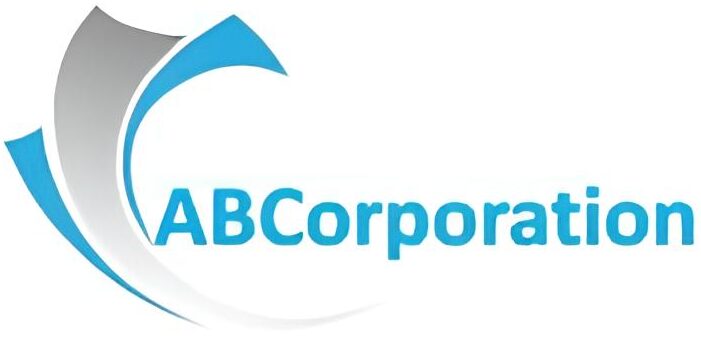Communication, Dissemination and Exploitation: Reporting in Horizon Europe
Reports are composed of two parts: Part B is the Technical Report that details the work completed during the reporting period and needs to be posted into the EU Funding & Tenders site as a PDF file. Part A is the project-specific online forms in the site. Reporting your communication, dissemination, and exploitation activities is subject to the same rules. It is also necessary for you to finish Part A and Part B here.




Communication and dissemination activities
The amount of information required for this element has increased in Horizon Europe (HEU) projects. Once reported simultaneously, the two parts are now reported separately. With particular emphasis to the target audience, all communication and distribution efforts (such as conferences, clustering events, trainings, and social media campaigns) should be included.
The name and kind of the activity, its goal and result, the number of people it reached from various target groups (such as research communities, innovators, industry, authorities, or citizens), and the information about the channel must all be included next to this information. You should be able to stay on track if you take into account the items that are already included in your Plan for Dissemination and Exploitation, including the Communication activities (PDEC) that you submitted as a deliverable.
Publications
All peer-reviewed publications resulting from research programs that the EU funds must be fully reported. The European Union works to maintain the values of open science by making sure that all peer-reviewed papers are reported. This goes beyond simple bureaucratic procedure; it also has to do with accountability, transparency, and maximizing the impact of your research. You are serving the larger scientific community as well as your commitments by making sure that this rule is followed.
A significant factor that determines whether reported publications are eligible is the accurate acknowledgment of financing and compliance with Open Access guidelines. Thus, before submitting a paper for publication, make sure you are fully aware of the prerequisites. Publications that are available through OpenAIRE are frequently shown automatically in the portal.
However, keep in mind that these can also include papers or public deliverables written by project participants that are not products of the work delivered for the project. The Persistent Identifier (PID) of the publication, repository, kind of publication, title, authors, ISSN/eISSN, publisher, and open access are among the details that need to be monitored and recorded in the portal.
Datasets
Does result sharing go beyond peer-reviewed publications? Yes, let’s discuss datasets, a brand-new area in Horizon Europe, which is another crucial component. The European Union requires that datasets produced during projects be documented alongside publications, placed in approved repositories, and adhere to the FAIR principles.
It is important to follow the concepts of findability, accessibility, interoperability, and reusability in this step, which goes beyond simple administration. Additionally, by putting datasets in repositories with open access, you guarantee that other members of the scientific community can access and use your research.
To help streamline the process, make sure you create a thorough Data Management Plan, which is a required deliverable for HEU projects. In this plan, you should specify which data is excluded from open sharing because of security requirements, confidentiality requirements, or other valid limitations.
Impact and Impact Continuation
Additionally, Impact and Impact continuation are new in Horizon Europe. Your project will have a wide range of impacts, from improving science and technology to addressing societal issues. Therefore, it is crucial to take into account the project’s Technology Readiness Level (TRL) and how it contributes to various Sustainable Development Goals (SDGs) when reporting on impact. Don’t forget to emphasize ways that citizens and/or end-user entities can continue to participate once the project is finished.
What should I write about the work progress in Part B?
An account of the work completed during the reporting period can be found in the Technical Report (Part B). A description of each work package’s activities during the reporting period, including an outreach activity, should make up the core body.
Tips from AB Corporation
• Consult your PDEC and the Description of Action (DoA) first. Elucidate the status of every accomplished or ongoing task, deliverable, and milestone listed in the DoA.
- Mention the objectives, the target audience, and key performance indicators (KPIs) for each activity listed in the PDEC, together with their target values. Analyze the results of the activities that were carried out while taking quantitative and qualitative analysis into account.
- Remember to maintain your online presence! Make sure your initiative has an active social media presence and a website in accordance with EU regulations. Incorporate analytics data, such as numerical indicators that illustrate the advancement of outreach objectives. Explain how you weight the findings against the starting targets specified in your PDEC to continuously monitor performance and assess these channels’ efficacy.
- Explain why any activities were not implemented exactly as anticipated in order to address any delays. Provide an explanation of your future plans for its implementation, including the steps you will take to accomplish tasks, reach milestones, and meet objectives.
- Emphasize the steps taken to guarantee the project outcomes are used for both commercial and non-commercial purposes when discussing exploitation activities. Contributions to standards, patent applications, licensing contracts, and other technology transfer formats may fall under this category.
- Don’t forget to discuss additional project effect factors like TRL, citizen engagement, and SDG contributions. You can give a thorough overview of the project’s wider social relevance, engagement of stakeholders, and progress toward broad applicability by evaluating and documenting these factors.
- If this isn’t the last reporting period, then summarise the plans for the remaining tasks and activities in brief, giving an indication of the project’s future course.
- Finally, but just as importantly, to make your report more effective, add figures and links where appropriate. Reader comprehension and interpretation of complicated information can be facilitated by the clear and succinct portrayal of the data that data visualisations can offer.
You may guarantee thorough coverage of your communication, dissemination, and exploitation activities in your Technical Report by include these components. This will show the EU that you are accountable, making progress, and have a strategic plan in place.


AB Corporation can support you
Numerous project consortia have benefited from the effective support of our team at AB Corporation in producing their periodic reports. As an advocate for numerous EU-funded initiatives, we offer direction and assistance with planning, monitoring, and evaluation. Please get in touch with one of our experts if you would like more information about our project management assistance.
